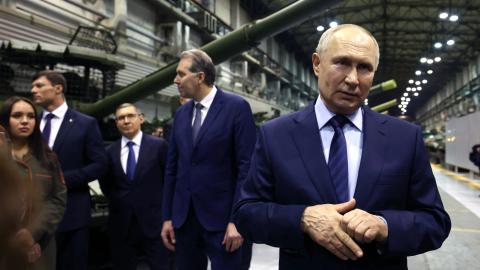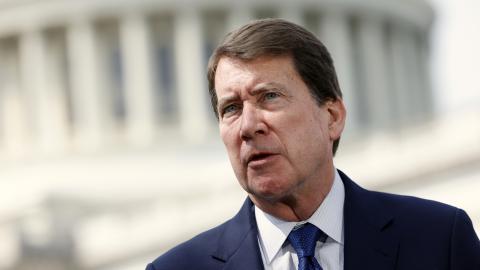The recently released Lost in Florence is a movie about a young American man who, like the city's greatest poet, recognizes that he has fallen off the straight path and, now lost, must find his way again. Heartbroken and healing from an injury that derailed his professional football career, Eric (Brett Dalton) meets a beautiful Italian architect (Alessandra Mastronardi) and joins a local team in the incredibly brutal Florentine sport calcio storico.
In a sense, Lost in Florence is a retelling of a central American story--a pilgrimage to the old world in search of the authentic self. It's also a beautiful tribute to the capital of the Italian renaissance made by writer and director Evan Oppenheimer, whose own Italian days served as something of a model for his movie's protagonist. Oppenheimer and I were once neighbors in Brooklyn, N.Y., where we played on a local club representing the neighborhood in the most American of sports, baseball. I spoke with him recently about his latest movie, the city where he filmed it, and the gifts of Florence, including calcio storico.
**LS: What is the particular appeal for filmmakers about Florence? Is it the light? The architecture? Il Duomo itself, as recognizable as any landmark in the world? Florentine craft services?**
EO: Florentine craft services (filmmaker-speak for "food") ain't bad! But, actually, I'm not sure that Florence is as overexposed cinematically as you might expect. Of course, I remember A Room With a View--it had a big impact on me when I first saw it in college. But, aside from that, I can't think of any English-language movies that were shot predominantly in Florence. Maybe I just didn't do my research. I can't say that I've seen Eat Pray Love or Under the Tuscan Sun. But I think, at least in American movies, that we've seen more of the Tuscan countryside in movies than we have the actual cities.
**LS: Lost in Florence focuses on several sculptures, two by Donatello, and another of Hercules, which is also the nickname of the movie's hero. What is the city's most important piece of art--or, what is Florence's contribution to civilization?**
EO: I'm going to choose another sculpture that you see in our movie--Michelangelo's "David." To be clear, in our movie you see the copy of the statue that's in the Piazza della Signoria, the central square of Florence, rather than the original version that's in the Galleria dell'Accademia. It's interesting, I hadn't thought until this moment how much sculpture there is in the movie, while there's no painting represented at all. There's that scene you refer to that revolves around two Donatello statues. I never thought we'd actually be able to shoot that scene, because I never thought they'd let us shoot in the Bargello, which is the preeminent museum in Florence for sculpture. But, miraculously, we shot there, on our very first day of filming. With, essentially, no supervision. So, as I'm watching our crew walk around these priceless statues carrying long tracks of dolly for the camera to move on, I'm thinking that one false move and one of these statues gets knocked to the ground. And, the next day, I'm reading in the headlines: "American Destroys Italian Patrimony." Very nerve-wracking.
**LS: What particular appeal does Florence have for you? For instance, was there a certain kind of magic you wanted to capture in the film that you associate with your first time in the city? Has Florence changed much since you first visited?**
EO: I lived in Florence years ago, at a time in life that I was dealing with the same issues that Eric, the protagonist of the movie, faces--what will my future look like, and who will I be entering it with? As a writer/director, every movie I make is very personal to me, so it's unsurprising that I chose to make a film about these issues in the same place where I had to confront them. As for how much the city has changed since I lived there, long ago, I'd say that, while it's changed a bit, it's changed a lot less than an American city would. I've lived in New York City, near Union Square, for about 15 years. In that period, almost every single storefront in the neighborhood has changed. In Italy, for a variety of reasons, there's more continuity.
The other great thing about making a movie in Florence was working with an Italian crew. They were super efficient (which was good, because the days there are shorter than they are here--on balance I'd say about 25 percent shorter, because they don't really believe in overtime in Italy), and delightful people. The actors were almost all local--or, at least, Italian. My two Italian leads, Alessandra Mastronardi and Alessandro Preziosi, are both very well known in Italy, and have both had high-profile American projects come to them in the wake of our movie. Alessandra Mastronardi is such a big star in Italy that I saw a young woman almost faint upon seeing her randomly in the street.
We did a lot of shooting in the middle of the night, when there are very few people around. (Which is why we have scenes at the Piazza della Signoria and the Ponte Vecchio, maybe the two busiest places in Florence, with no one in them but our actors.) And somehow shooting these scenes gave me a specific perspective on Florence: The city still feels like itself, it feels unique and alive, distinct from all the tourists. The tourists feel like an overlay, something that gets peeled off every night and placed back down every morning--but, underneath that overlay and unaffected by it, is the true city.
**LS: The sport at the center of the movie, calcio storico, looks like a version of Dante's Hell with a ball rolling around the nethermost circles. Can you explain the game? Were the players in the film real calcio historico players?**
EO: I came across calcio storico when I lived in Florence. Having heard nothing about it beforehand, I was stunned by it--it's exhilarating, brutal, and utterly unique. I call it a mix between rugby and street fighting. The point is to advance a ball to the other side of the field, and throw it in the net, thereby scoring a point. But a lot of the players--there are 27 on each side--are uninterested in the ball; as soon as the game starts, they just fight. Each quarter of the city has a team, and there are two semi-finals, followed 10 days later by the finals. We were lucky enough to use many actual calcio storico players in our movie, which also enabled us to use footage from the actual games interspersed with our created footage. The closest that I (as a non-Florentine) have come to playing is to be on the field before a game starts--when we shot the movie, I was the last person off the field before the gate was closed and the game commenced. But I was definitely getting off that field before the mayhem began.
**LS: Your films are sweet and intimate and often have families at the center of them. I'm thinking particularly of the last film you did about a young girl who learns how to play chess in New York City from a wily old master, played by F. Murray Abraham. What is your ideal audience? Or, who do you make movies for?**
EO: Each movie I've made has been a different genre, so I guess each one has had a different audience. Lost in Florence is a romantic adventure film about a young man wondering what his life is going to be--I could see it appealing to people in their 20's and 30's who are facing that issue, or older people who remember what it was like to be torn between different futures. My prior movie, A Little Game, was my first family film. I wanted that movie to appeal to kids (like my own), as well as parents, especially parents in New York City--I was trying to represent both the challenges (and pleasures) of being a city kid, as well as those of a city parent. But I've also made a satire, a drama, a romantic comedy, and a science-fiction thriller. So I guess the answer is that I'm making movies for myself--if I was a smarter businessperson, I'd try repeating myself once in a while, instead of constantly trying something new. But there are people who always order the same thing at a restaurant, and people who pathologically have to try something new every time.
LS: What is your next film about?
EO: Since every movie I make seems to be a reaction to the prior one, my next film is, unsurprisingly, set here at home, in New York City. In response to the huge logistical complications of Lost in Florence, I'm making a tiny movie, with the absolute smallest crew that we can manage--the producer and I are debating if we need either seven or eight people, as opposed to Lost in Florence, which probably had a crew of 40 or so people. We're hoping to shoot this next one in September. It is provisionally titled The Magnificent Meyersons--the story of one remarkable family on an ordinary day in New York City.











